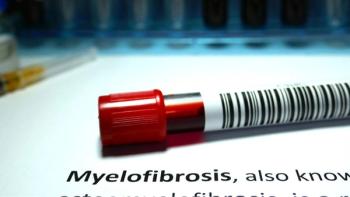
Why ‘A Simple Blood Draw’ Could Hold Valuable Breast Cancer Information
Dr. Heather Parsons of Dana-Farber Cancer Institute explains how a liquid biopsy could help patients with breast cancer and their care teams learn vital information.
For patients with breast cancer, a liquid biopsy — a blood test used to check for specific genetic information — may be utilized in order to determine their HER2 status, according to the findings of Dr. Heather Parsons, a medical oncologist at Dana-Farber Cancer Institute and an assistant professor of medicine at Harvard Medical School in Boston.
Parsons, who presented her findings at the
“We present a novel, minimally invasive HER2 classifier leveraging epigenomic information from cell-free tumor DNA from one (milliliter of) plasma,” Parsons and her colleagues wrote of their findings. “If this approach remains robust in accurately classifying additional HER2 states, it could address the limitations of current tissue-based testing. Integration of this epigenomic platform in prospective interventional studies could support the development of novel and improved predictive classifiers for response to HER2-directed therapy.”
Parsons discussed the process of undergoing liquid biopsy, progress in this field and conversations patients should be having with their care teams.
Q: What can patients expect when they’re undergoing a liquid biopsy?
A: When patients are undergoing liquid biopsy, it's fairly straightforward at the beginning, it's just a simple blood draw. One exciting part of this study was that (the testing) was just from one milliliter of blood, but it's a blood draw. And usually, that blood draw is then sent off to a particular company to do an analysis and then that information, once the analysis is done, is given back to the patient and their treating provider to gain information about the cancer. And that information can be very different, depending on what specific test is used. And so, it's important to think about what your questions are and what your physicians' questions are, so that you can make sure that they're being answered with the test that is being used.
Q: Why are these tests so important for decision-making?
A: Right now, we use circulating tumor DNA liquid biopsies to identify patients who may have specific mutations such as ESR1 or PIK3CA that can guide us to particular therapies. I think we're just at the beginning with this right now, and we are hopeful that these additional tests will be able to give us more information about a patient's cancer journey that can help guide therapy and help us take better care of patients.
Q: How can patients better advocate for themselves to undergo a liquid biopsy?
A: I think patients can speak with their treating providers to ask about whether a liquid biopsy might be of utility at particular times and (for) patients with metastatic breast cancer specifically. At a time when there's a decision to be made about new treatment is a perfect time to think about using a liquid biopsy. And that's where we would really advocate for the use here.
Transcript has been edited for clarity and conciseness.
For more news on cancer updates, research and education, don’t forget to




